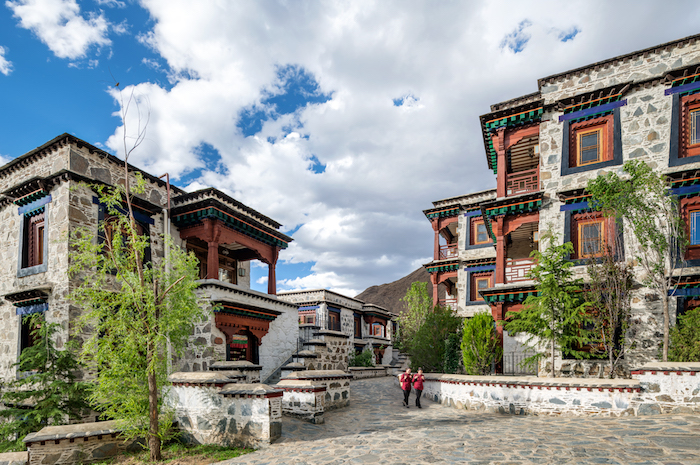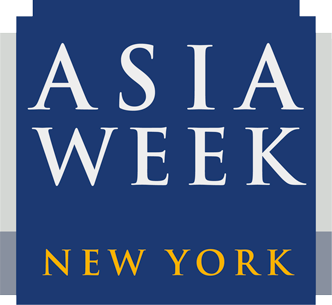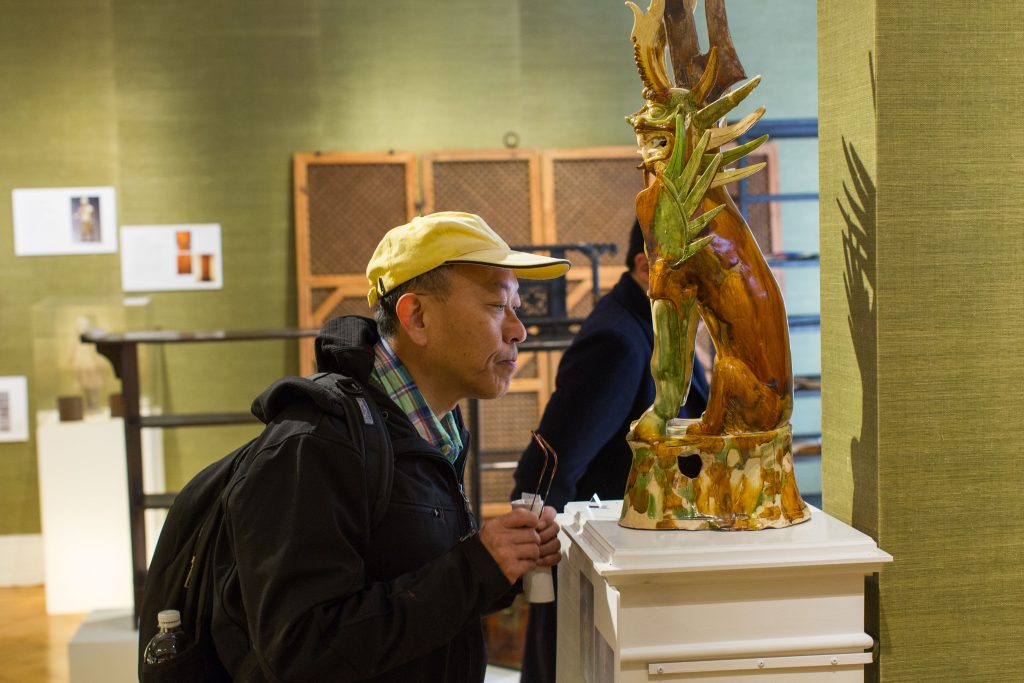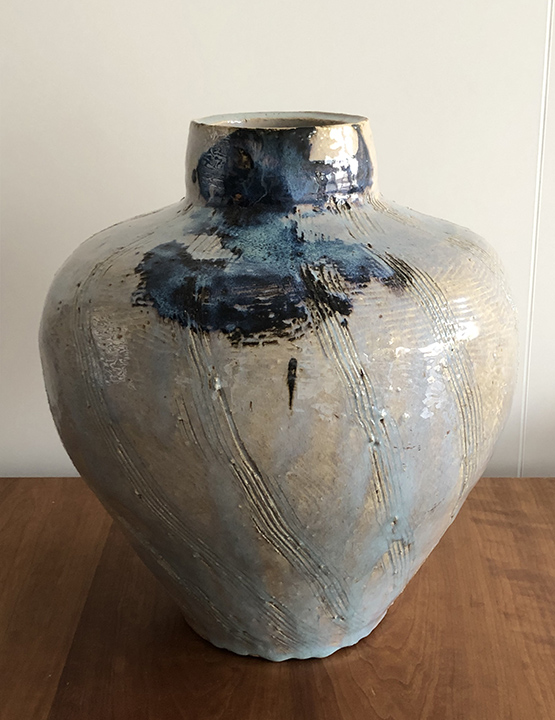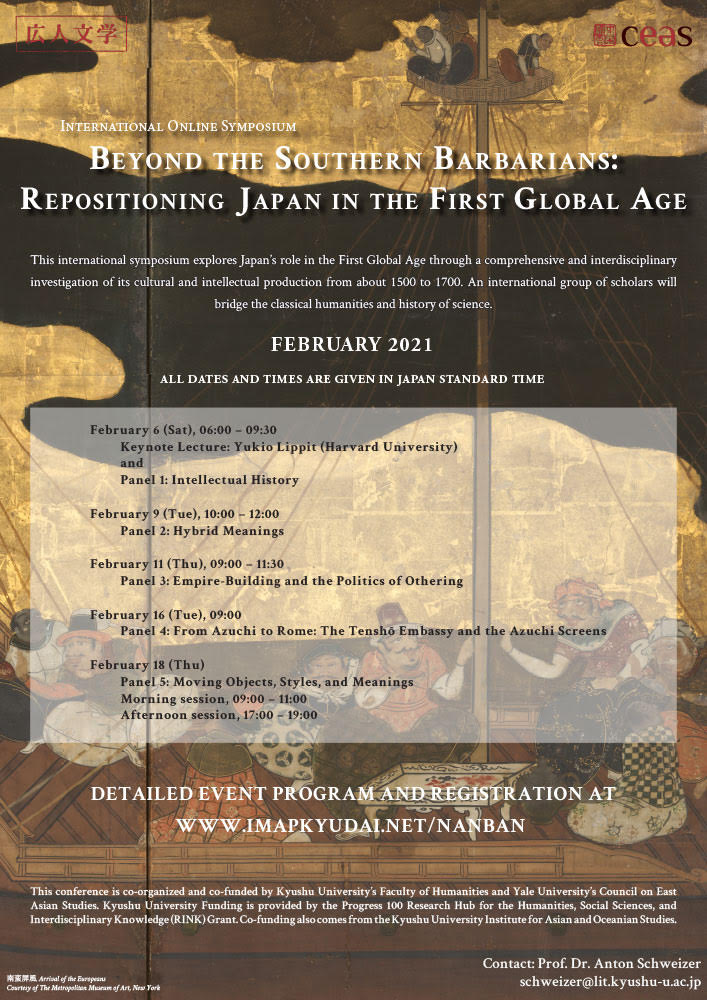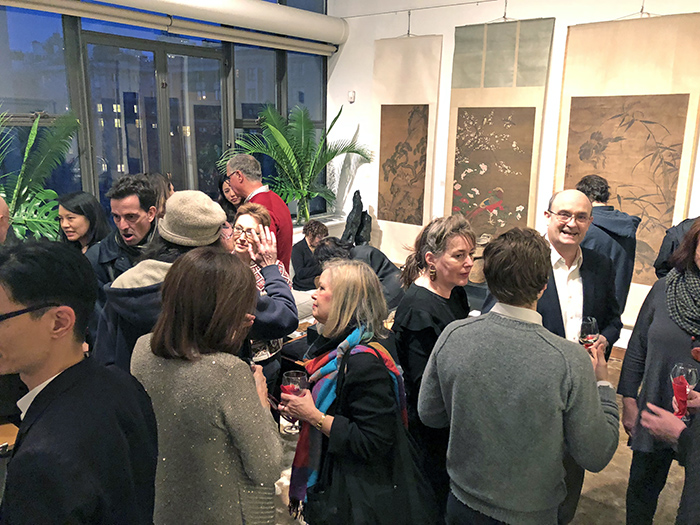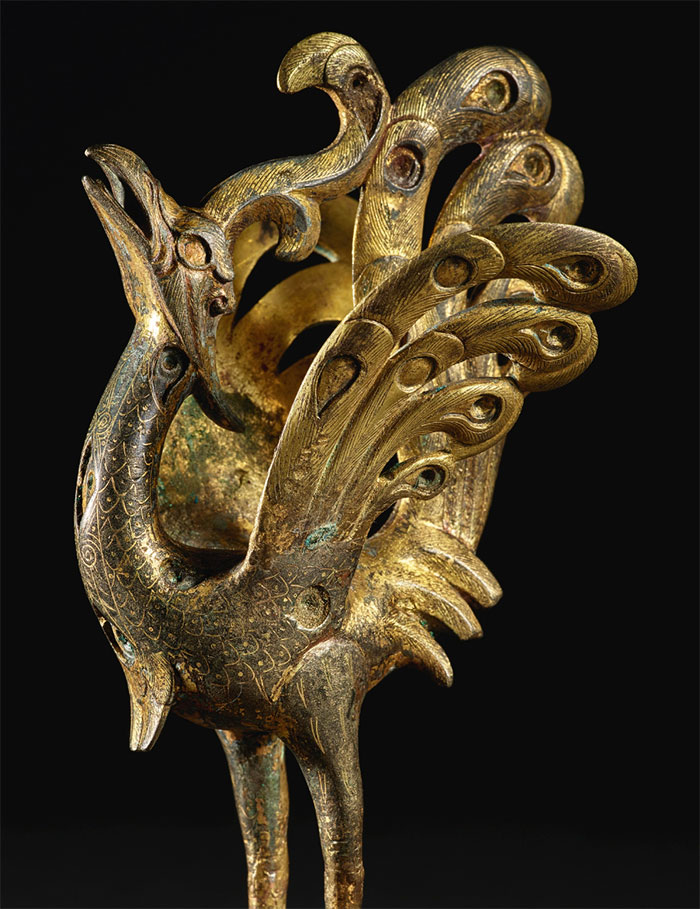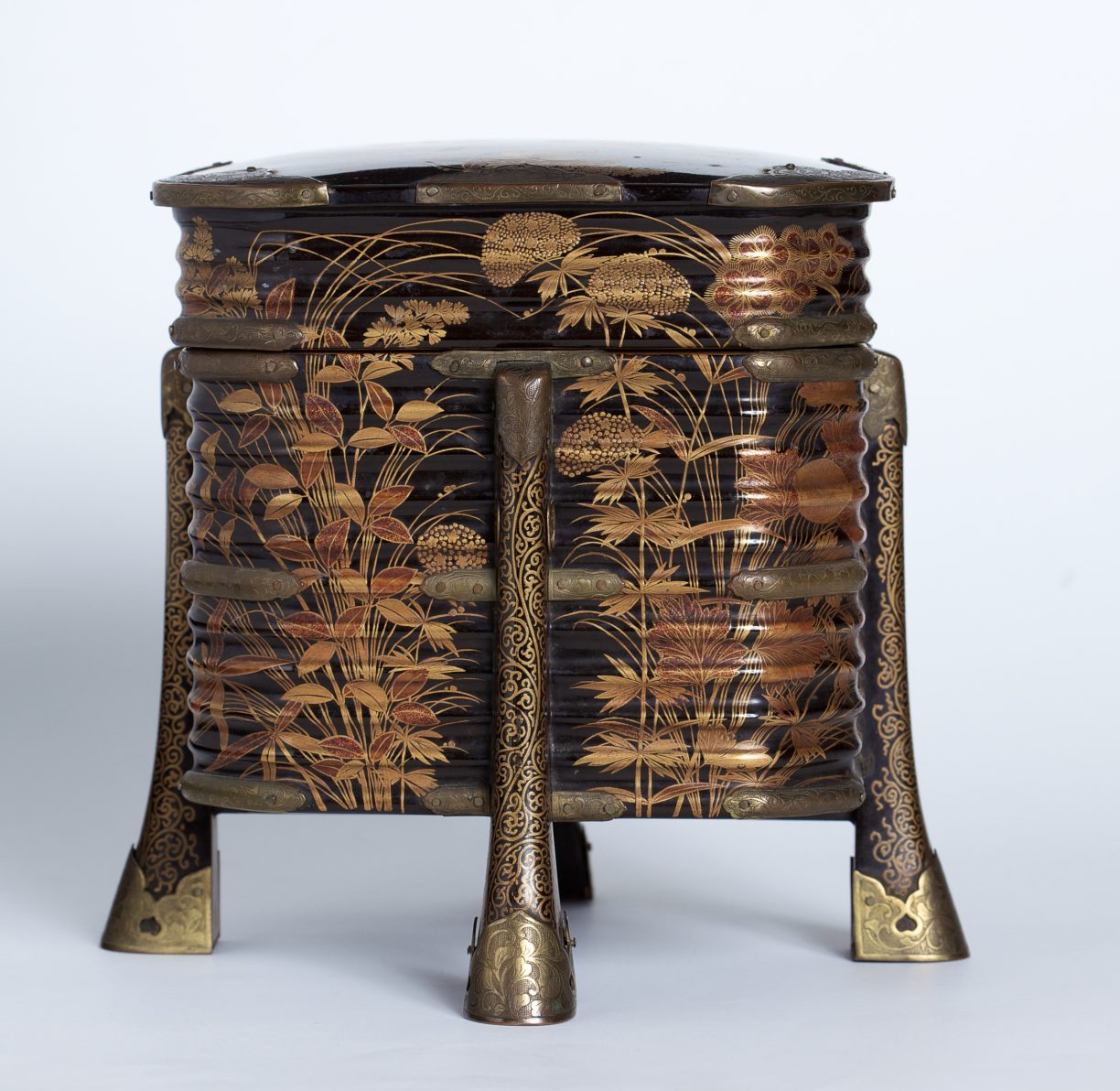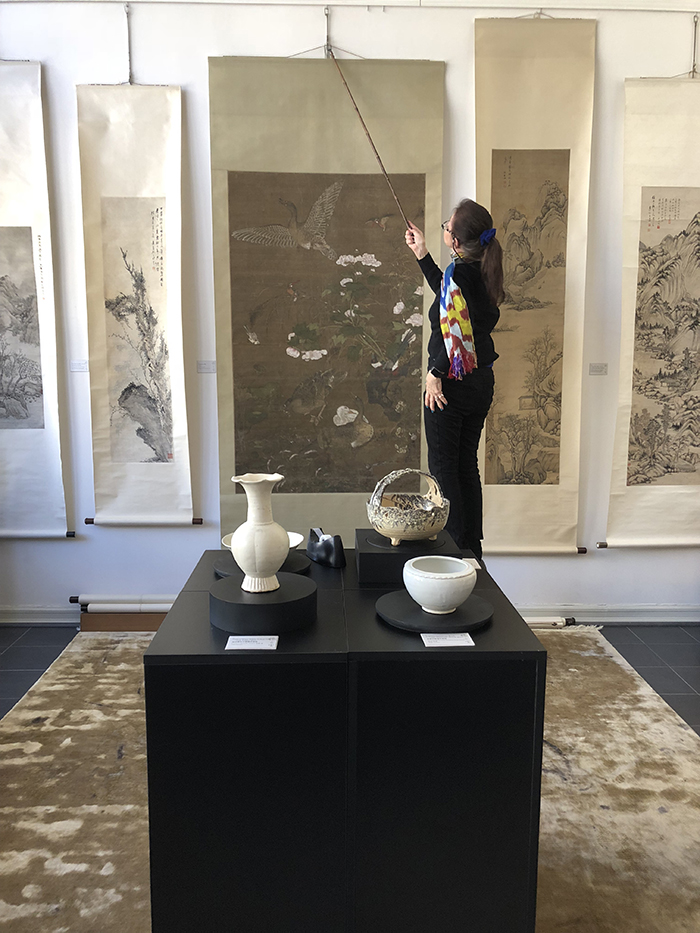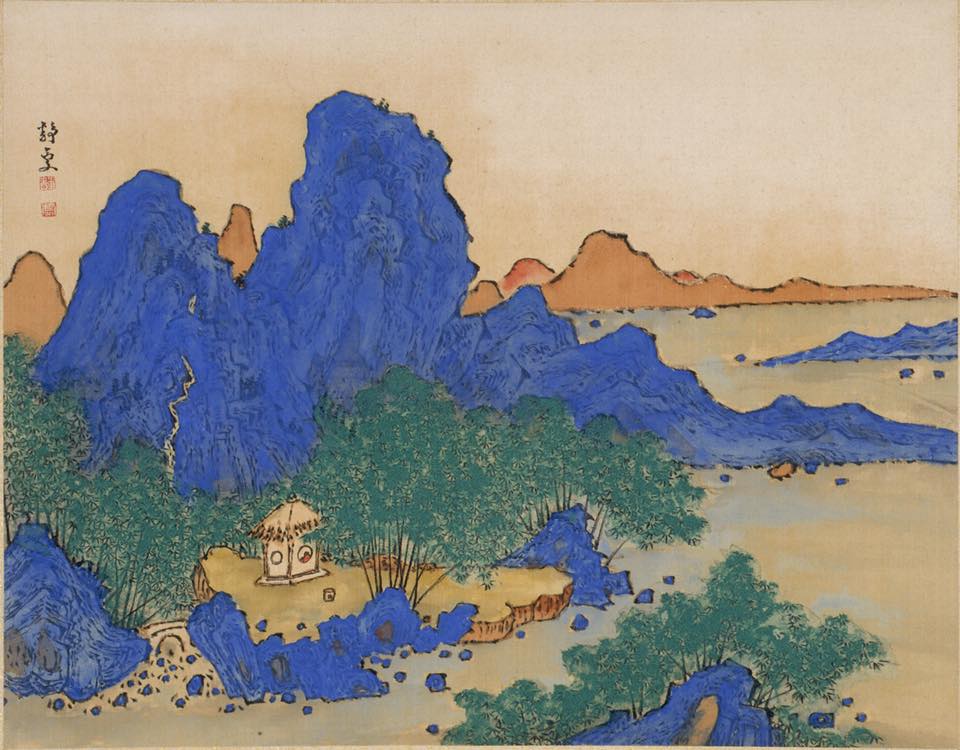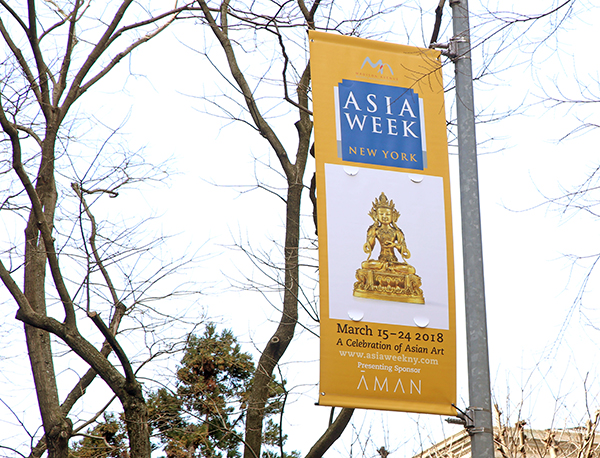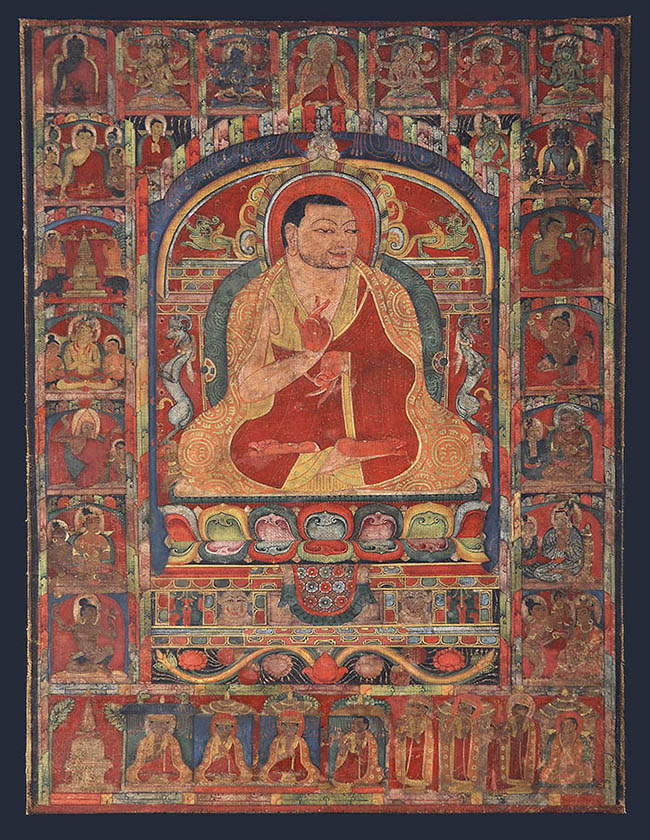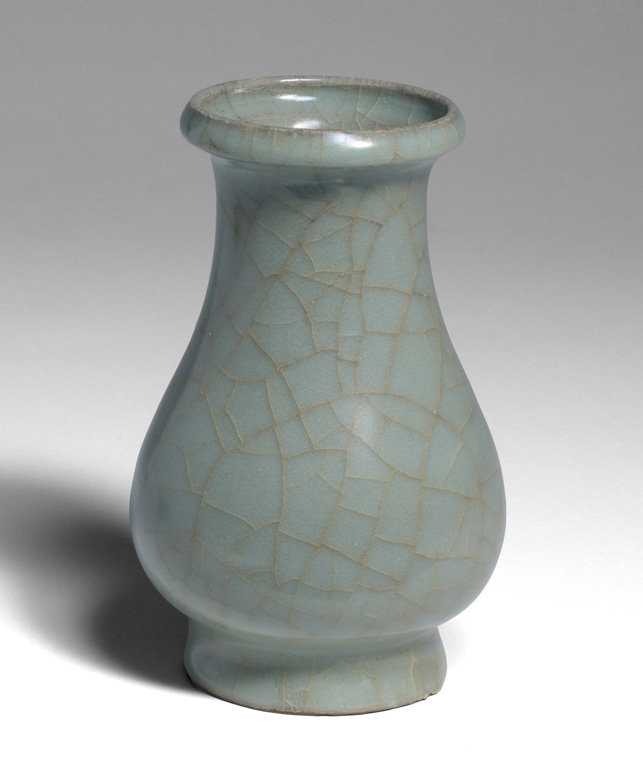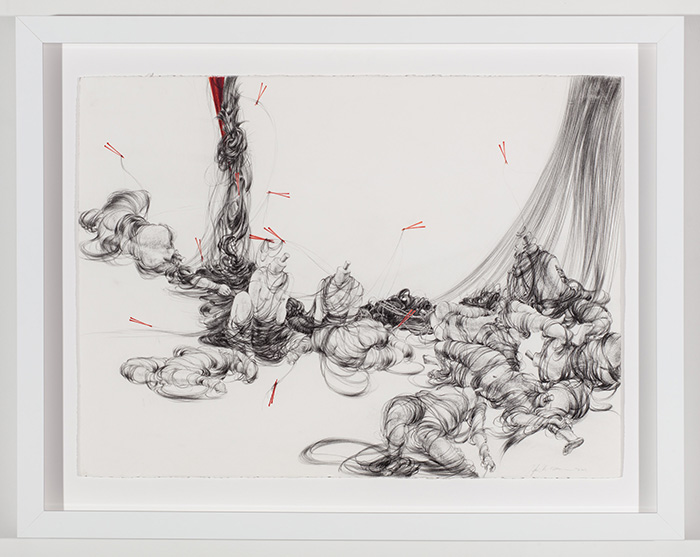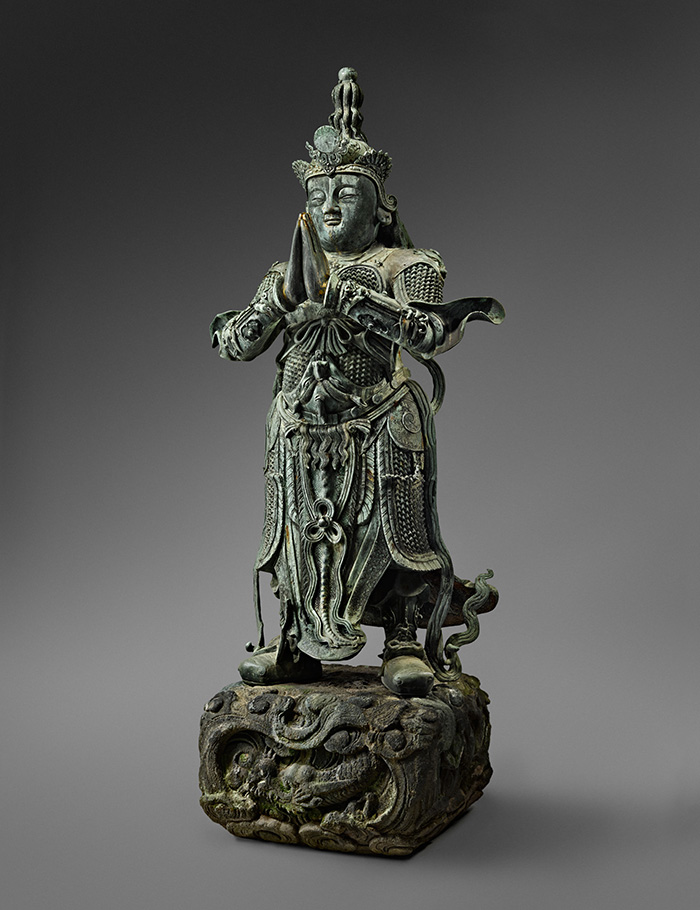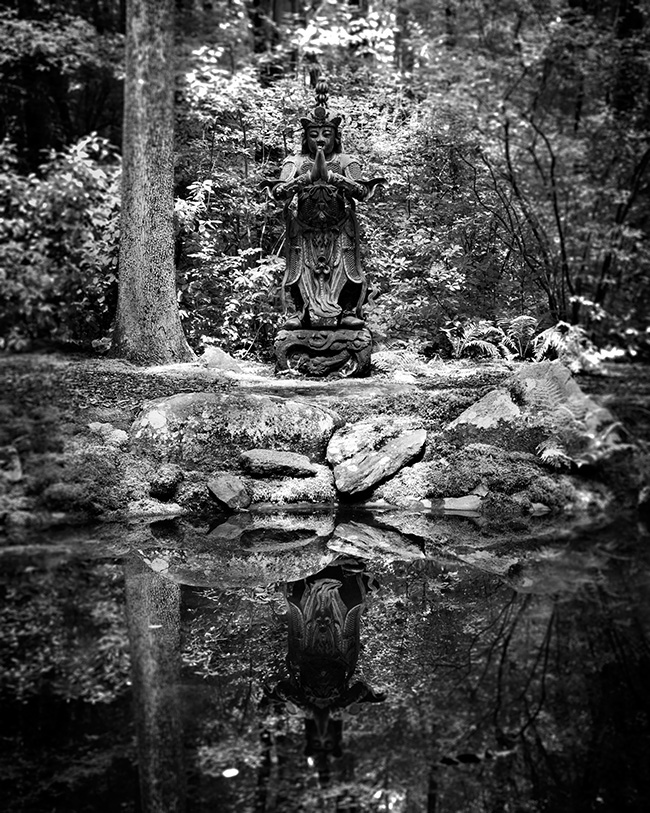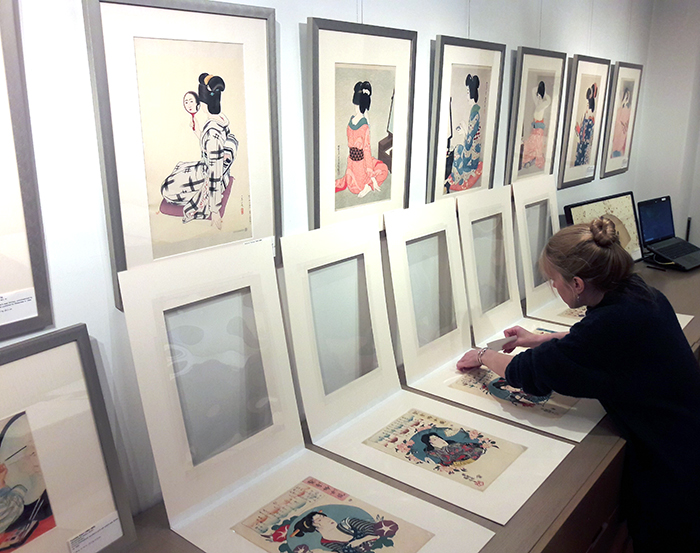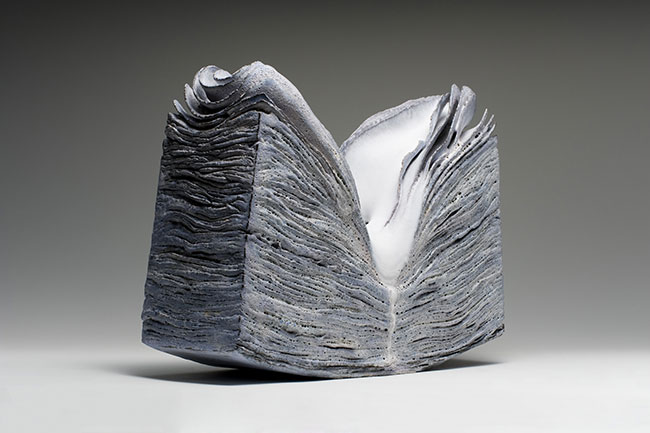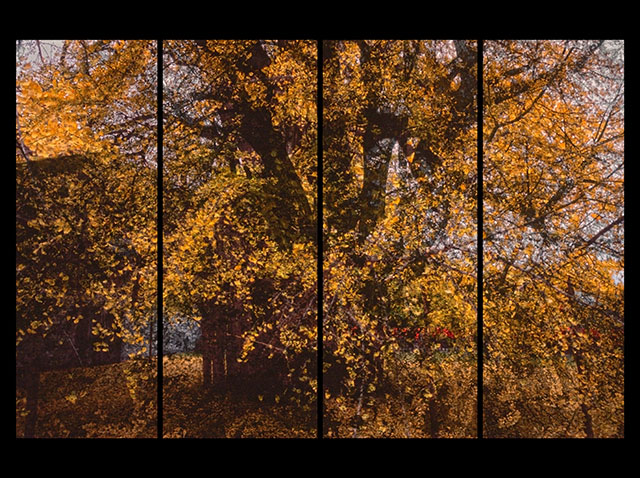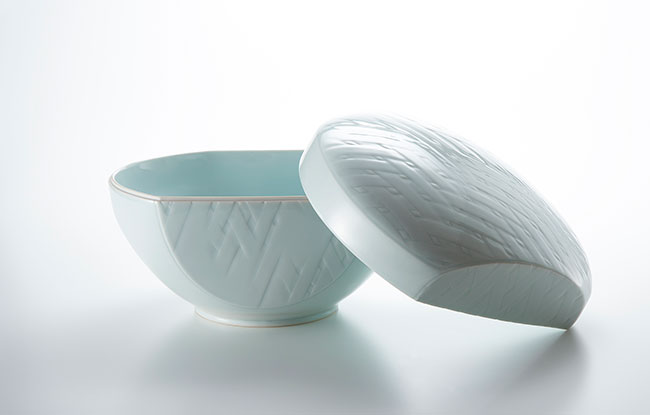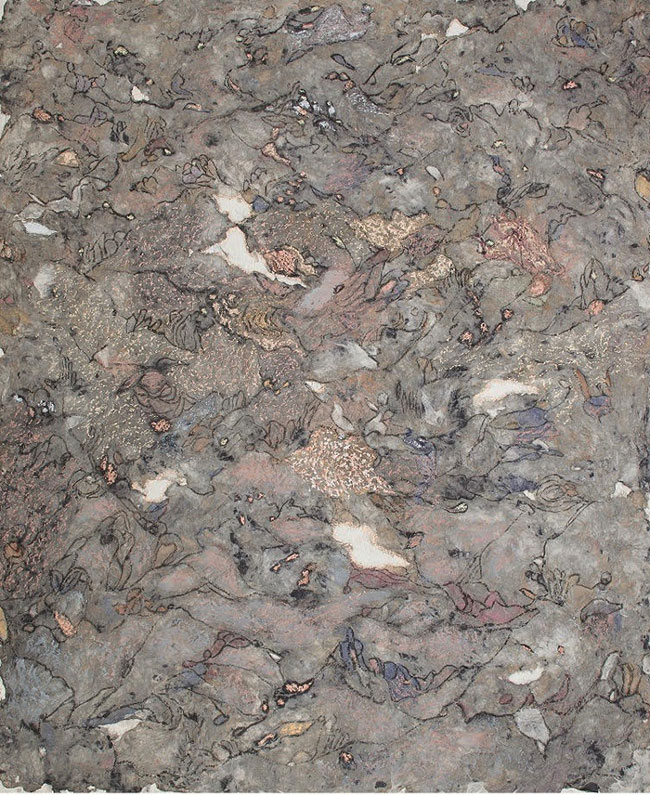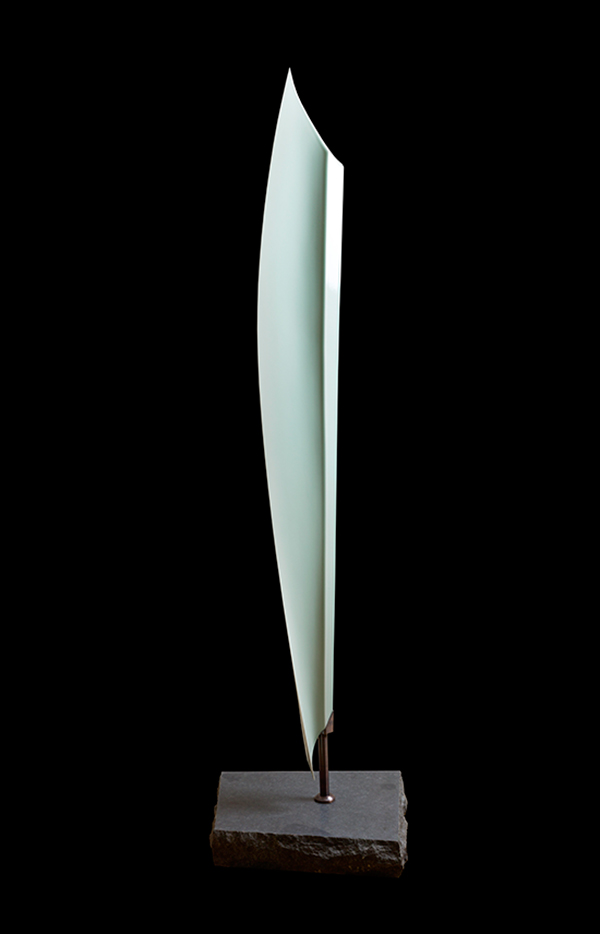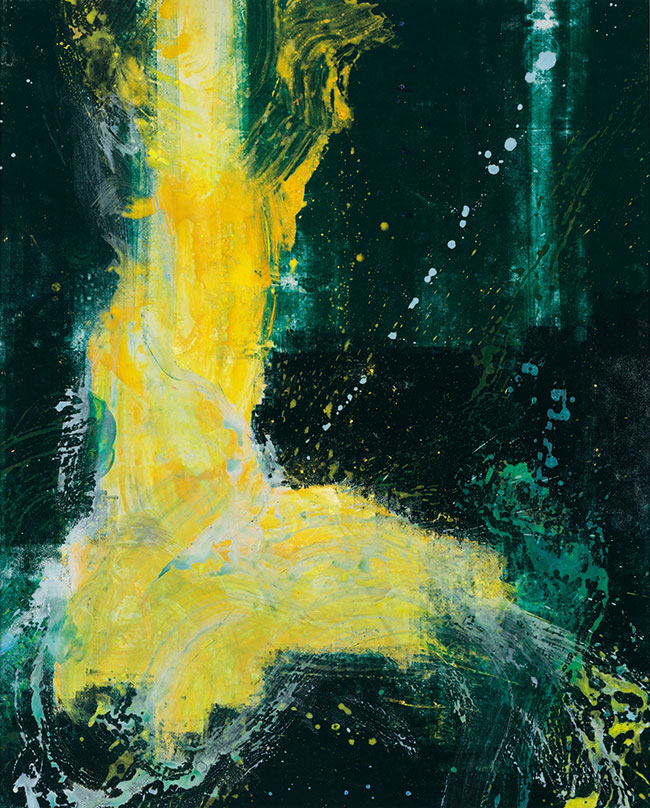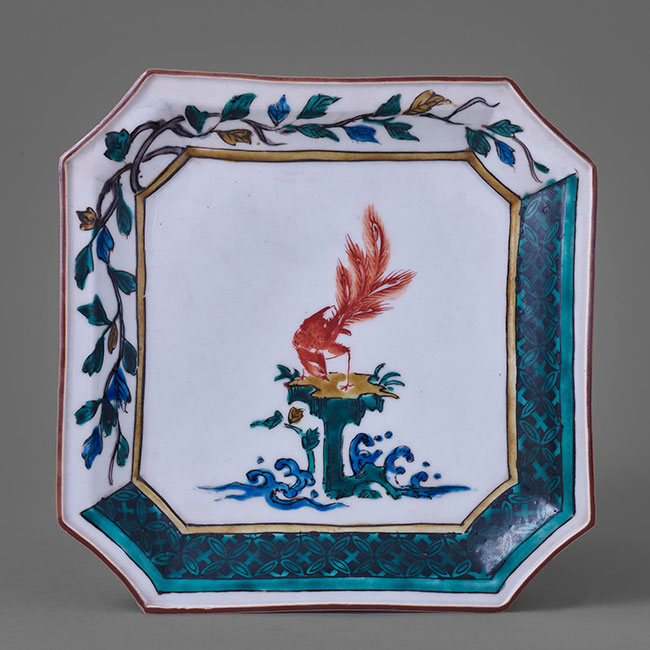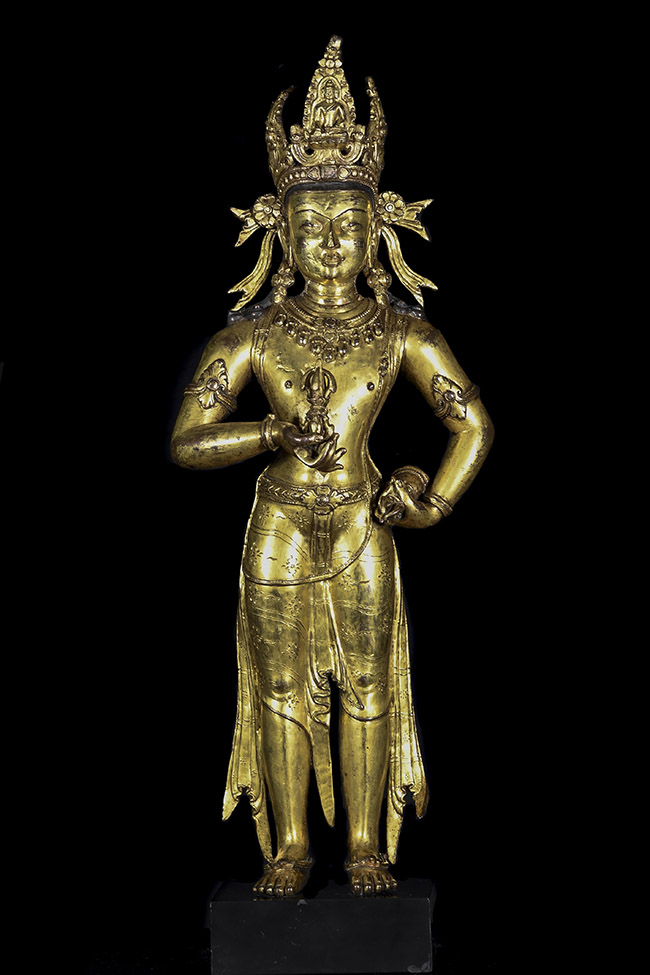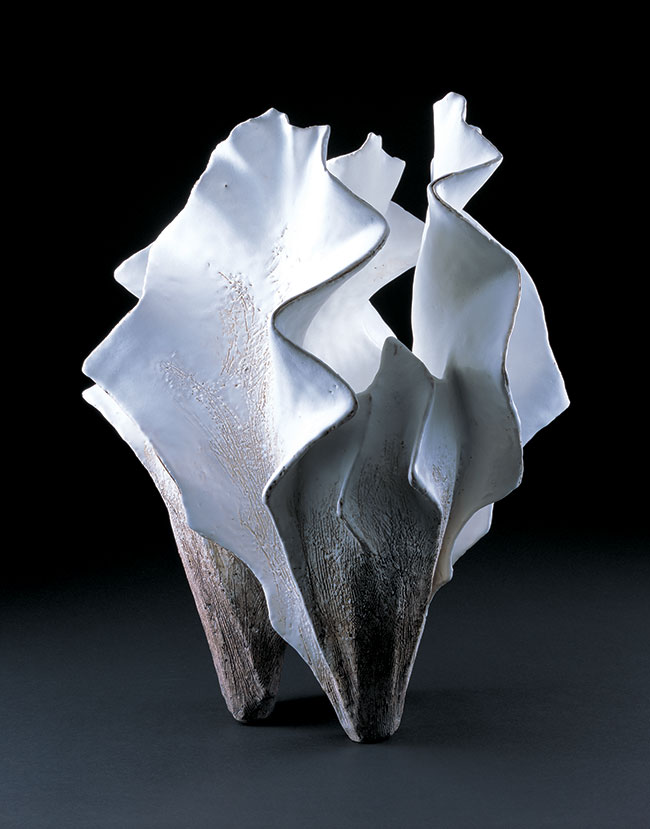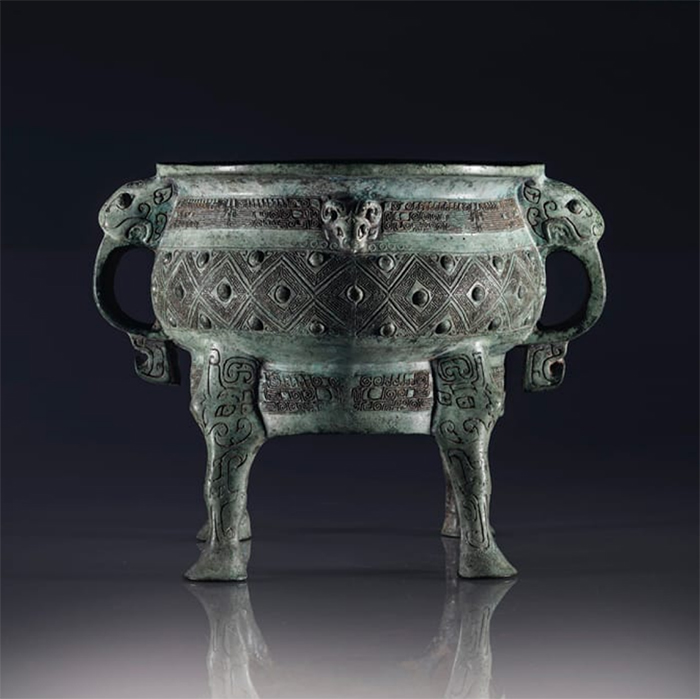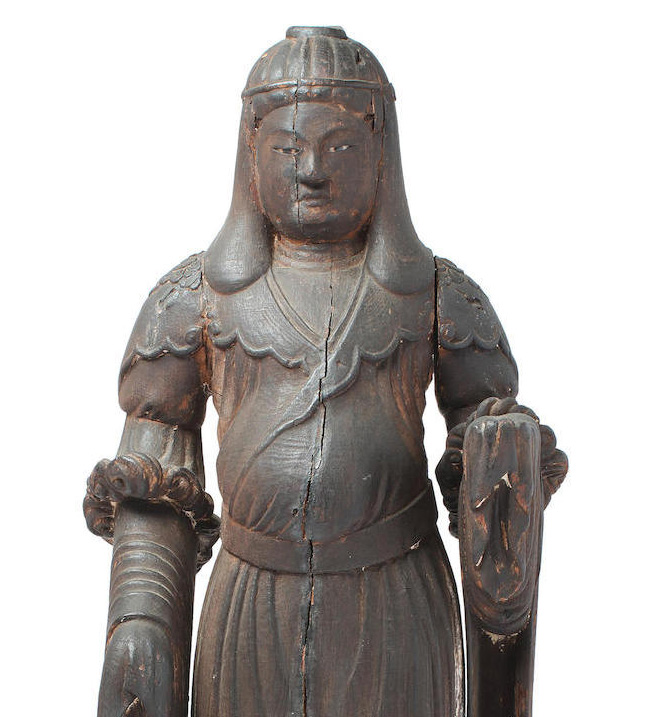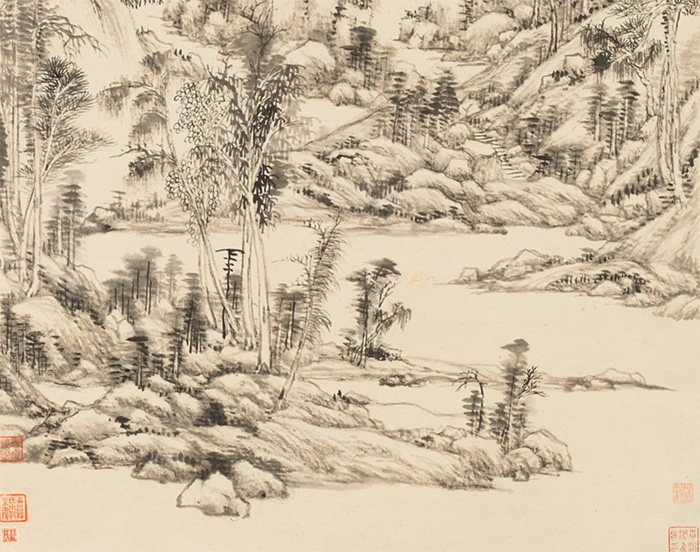From September 6–14, it's September 2019 Asia Week in New York. Several of our regular dealer participants are open to the public, showcasing traditional and contemporary examples of Asian painting, sculpture, ceramics, and more. Think of it as a teaser for the March 2020 edition of Asia Week New York! Here's our guide to the exhibitions on view. Many shows remain open past September 14—please check each listing below for details.

Left: Compilation of Recollected Images, Kishi Eiko, 2017, Shigaraki stoneware with colored-chamotte inlays, 26 x 25 1/4 x 5 1/8 in. Photo by Nagata Yō. Image courtesy of Joan B Mirviss LTD.
Right: Waves, Ogata Kamio, 2019, marbleized stoneware, 7 7/8 x 7 7/8 in. Inoue Kōji. Image courtesy of Joan B Mirviss LTD.
Joan B Mirviss LTD is holding two exhibitions from September 10 through October 25: “Composite Memories: The Clay Art of Kishi Eiko” and “Nami: Shikaku Geijutsu / Waves of Optical Illusion: Ogata Kamio”. One of the foremost women artists working in the field of contemporary Japanese clay sculpture, Kishi Eiko (b. 1948) has achieved international success, consistently winning awards in the US, Japan, and Europe. Leaving function behind and perfecting her own signature technique, Kishi creates powerful poised, and architectonic sculptures. Meanwhile, The unique and optically stunning marbleized ceramics of Ogata Kamio
(b. 1949) have earned this Hokkaidō artist memberships in two craft societies in Japan and entry into numerous international exhibitions, despite his rural birthplace. The exhibition at Joan B Mirviss LTD will be this master ceramist’s first solo exhibition outside Japan. The gallery is open Monday through Friday, from 11am to 6pm, at 39 East 78th Street, 4th floor.

SHIMIZU Keiichi 清水圭一(1962- )
White Tamba Flower Vase “Gen” 白丹波花器 “玄”, 2019
H19.3” x W14.5” x D6.5”, 49 x 37 x 16.5cm
Stoneware
Dai Ichi Arts, Ltd. is presenting “Yakishime: Whispering Ash.” Yakishime is an unglazed ceramic that has been fired in a wood or any other kind of kiln. Directly translating to fire-tight, yakishime 焼締 draws on the concept of Wabi-sabi and Japan’s history. These unglazed works feature dry, unadorned surfaces that perfectly embody wabi-sabi’s reverence for natural imperfection. Yakishime gave post-war Japanese artists new creative pathways while blending beautifully with traditions like the tea aesthetic. Yakishime: Whispering Ash presents works by TSUJIMURA Shiro 辻村史郎, KANESHIGE Kosuke 金重晃介, ISEZAKI Jun伊勢崎淳, TANI Q 谷穹, YOKOYAMA Naoki横山直樹, YAMAMOTO Izuru 山本出, TSUJIMURA Kai辻村塊, SHIMIZU Keichi 清水圭一, and KOHARA Yasuhiro小原康裕, among others.The exhibition is on view September 5–20 from 10am to 5pm, at 18 East 64th Street, #1F, with an opening on September 5th from 5 to 8:30pm.

Left: Detail, Kazan-in Tadanaga (1588-1662)
“Hawk in Winter Oak”
Hanging scroll, ink on paper
117 x 52 cm. (46 x 20 1/2 in.)
Right: Detail, Anonymous Chinese
(13th-14th c.)
“Eagle on a Winter Branch”
Old attribution to Li Di
Hanging scroll, ink & color on silk
153.3 x 82.5 cm. (60 3/8 x 32 1/2 in.)
In Kaikodo's exhibition “Sightings: Birds in Chinese & Japanese Art,” the Chinese paintings date from the 13th to the 19th centuries, with more than half from the 13th to the 15th. Many of the subjects are presented in such natural habitats as ponds and forests or woodlands, as if the viewer were a birdwatcher happening upon a scene. Meanwhile, The Japanese paintings comprise a much more diverse group. Naturalistic images include Tadanaga’s “Hawk in Oak” and Morikage’s “Swallow on Lotus,” both of the 17th century, as well as the 19th-century works, “Hawk in Winter” by Chikuto and “Pheasants” by Baiitsu. These are countered by such 19th-century narrative or anecdotal paintings as “Cockfight” and “Archer with Falcon,” along with a convocation of disparate birds perched happily together on branches that sweep across a handscroll by Gessho. In addition, a selection of Chinese and Japanese ceramics and works of art will be on view. The exhibition will be on view in the gallery from September 6 to December 6, at 74 East 79th Street, #14B.
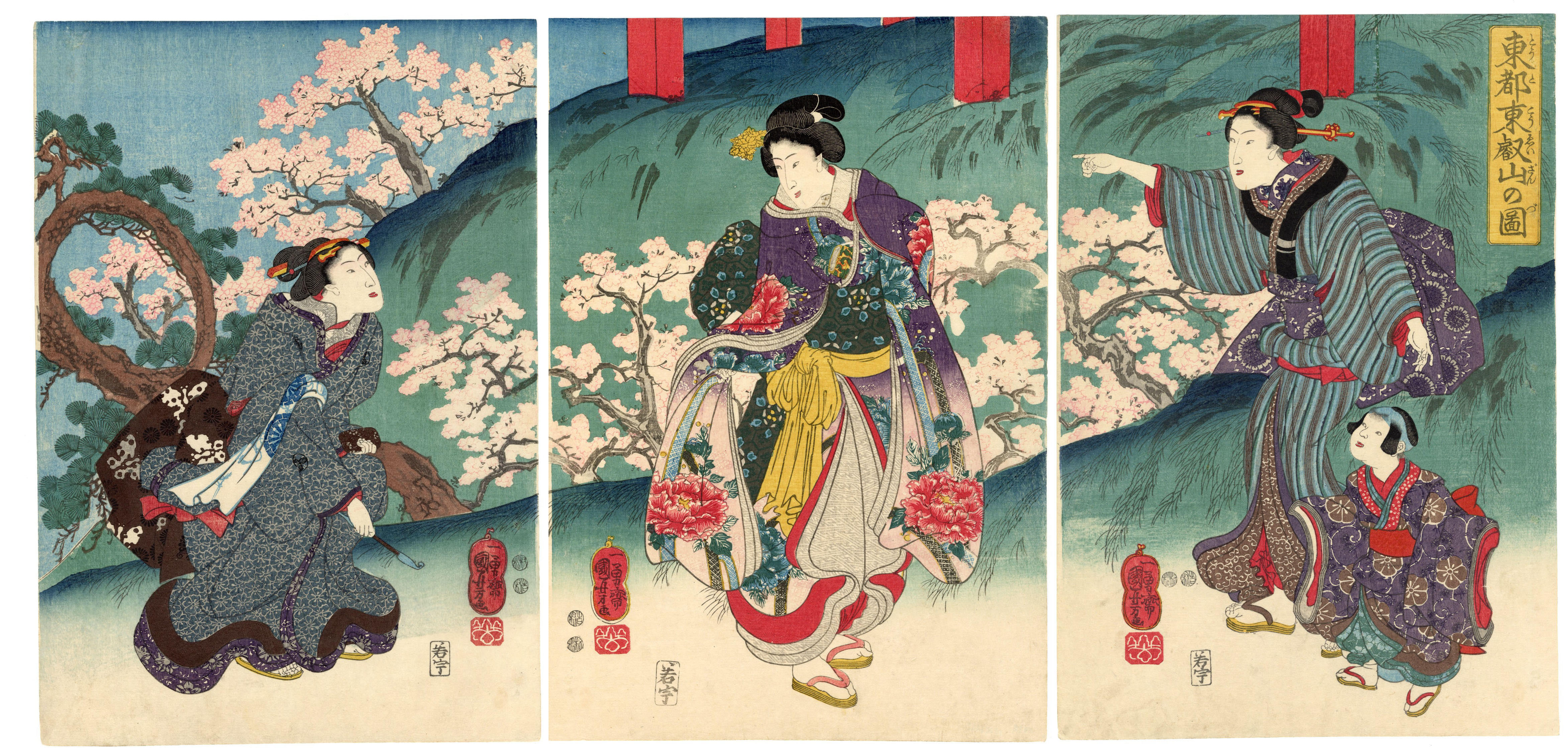
Ōtsuki Masako (b. 1943)
Silver Vase “Kō” (Sparkling Water), 2007
Silver metal carving with gold decoration
h. 11 7/8 x w. 13 x d. 8 1/4 in. (30 x 33 x 21 cm)
Onishi Gallery presents “Gold and Silver Waves: Contemporary Japanese Metalwork.” As Japanese contemporary metalwork is a relatively new concept to American audiences (both museum institutions and individual collectors), Onishi Gallery feels especially compelled to share the beauty and unique techniques of this Japanese craft with the public. Of the ten metalwork artists featured, two have been designated “Living National Treasures” by the government of Japan for their rare traditional knowledge and high level of creative skill: NAKAGAWA Mamoru (Living National Treasure); ŌSUMI Yukie (Living National Treasure); ŌTSUKI Masako; OSHIYAMA Motoko; HAGINO Noriko; HATA Shunsai III; SAKO Ryuhei; HANNYA Tamotsu; HANNYA Taiju; and MIYATA Ryohei. The show is open September 5–28, Tuesday through Saturday from 11am to 6pm, at 521 West 26th Street. The opening reception on September 5 takes place from 6-8pm.
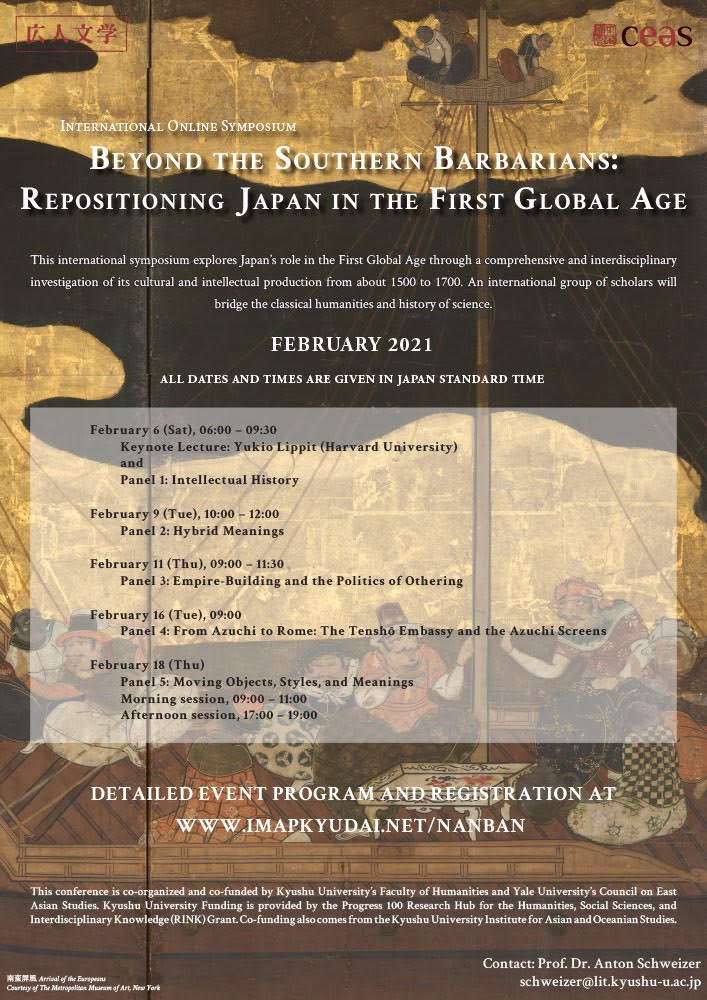
Oribe Mokuzuke-Chaire
Late Momoyama – Early Edo Period, early 17th c. Japan
10cm H. x 8.2cm W.
Zetterquist Galleries presents “Chinese, Japanese and Korean Ceramics,” an exhibition featuring Chinese, Japanese and Korean ceramics, largely sourced from Japanese collections. One of the highlights of the exhibition is an early 17th century Oribe tea caddy, fashioned from a small food bowl (Mokuzuke). It is a rare example from the transitional period between Momoyama and early Edo periods. Other Japanese pieces in the exhibition include a Ko-Kutani type square plate, a rare 14th -15th century Tokoname Heishi (Meiping) jar and a Sueki bottle. A Korean Koryo celadon ewer from the 11th century is the highlight of the Korean selections. The Chinese ceramics date from the Tang through Song Dynasties, and include a beautiful Tang Dynasty tripod plate with impressed pattern and vivid “Sancai” glaze. The exhibition is open September 9–13; please note the new location at 3 East 66th Street, #2B.

Yoshu Chikanobu (1838-1912), preparatory drawing with print of Annual Events and Customs of the Eastern Capital: Sixth Month, 1890, drawing 15 1/4 by 9 1/2 in., 38.7 by 24 cm; woodblock print 14 1/2 by 9 3/4 in., 36.9 by 24.7 cm
Scholten Japanese Art presents “BRUSH – BLOCK – BAREN: Japanese Woodblock Printmaking,” an exhibition exploring the process of Japanese-style woodblock production. Traditional Japanese woodblock prints are collectively referred to as ukiyo-e, which literally means pictures ('e') of the floating world ('ukiyo') and is derived from a Buddhist concept pertaining to the fleeting nature of life. However, during the Edo Period (1615—1868), the concept of ukiyo acquired a more nuanced meaning: the impermanence of our existence became a justification to indulge in the pleasures and entertainments that are available at this fleeting moment (for a price). As such, the realm of the floating world was that of the pleasure quarters, houses of assignation, teahouses, restaurants, leisure boats, and the theater districts. Images of these pleasures were affordable and widely available in the form of woodblock prints and illustrated books. This exhibition explores the many steps involved in the production of these images, from conception to the final print. The exhibition is open September 5–14 from 11am to 5pm (no appointment needed), at 145 West 58th Street, suite 6D. In addition, don't miss your chance to watch real woodblock printmaking in action by artist Paul Binnie on Friday, September 6 and Sunday, September 8, from 1–5pm.
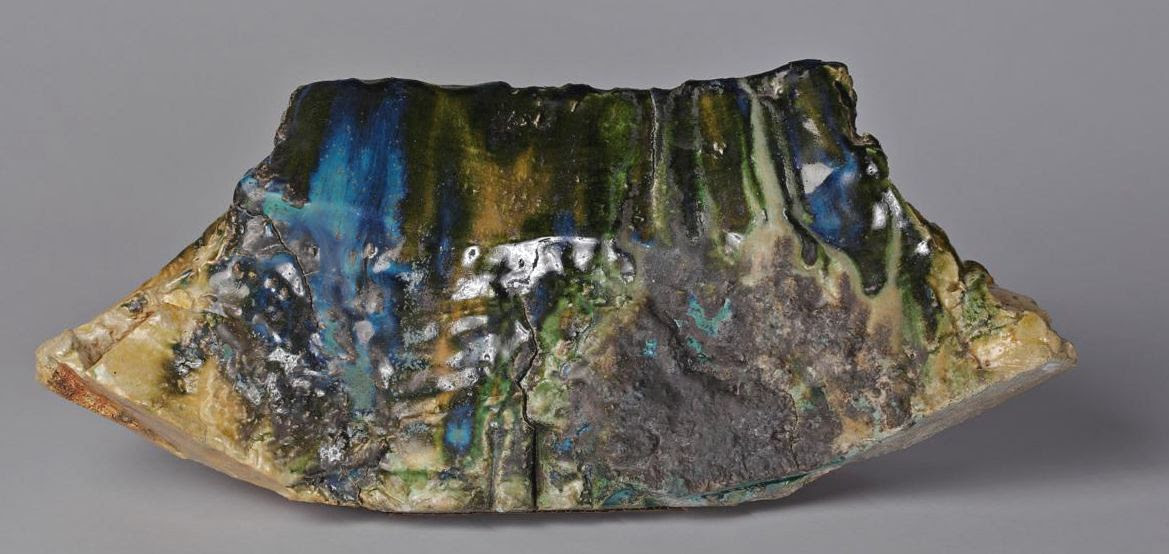
Motohide Takami, FIRE.P, 2013
Seizan Gallery presents “Fires on Another Shore,” a solo exhibition of Japanese painter Motohide Takami. In addition to marking the artist’s first and largest solo exhibition outside of Japan, the exhibition also celebrates the one-year anniversary of the gallery's New York presence, and the opening of its newly expanded gallery space at 521 W. 26th St. It will feature twelve recent works which delve into the artist's investigation into the limits of human interest and empathy referring to social events and historic disasters. Compelling and dreamy, the powerful imagery of Motohide Takami brings the viewer deeper into his landscapes: a house on a riverbank on fire, the portrait of the Japanese royal family juxtaposed with a Buddhist pagoda. Motohide Takami explores the limitations of the idea of the individual, of compassion and the human in today's society. The exhibition is open September 5 to November 2, with an opening reception on September 5 from 6-8pm.
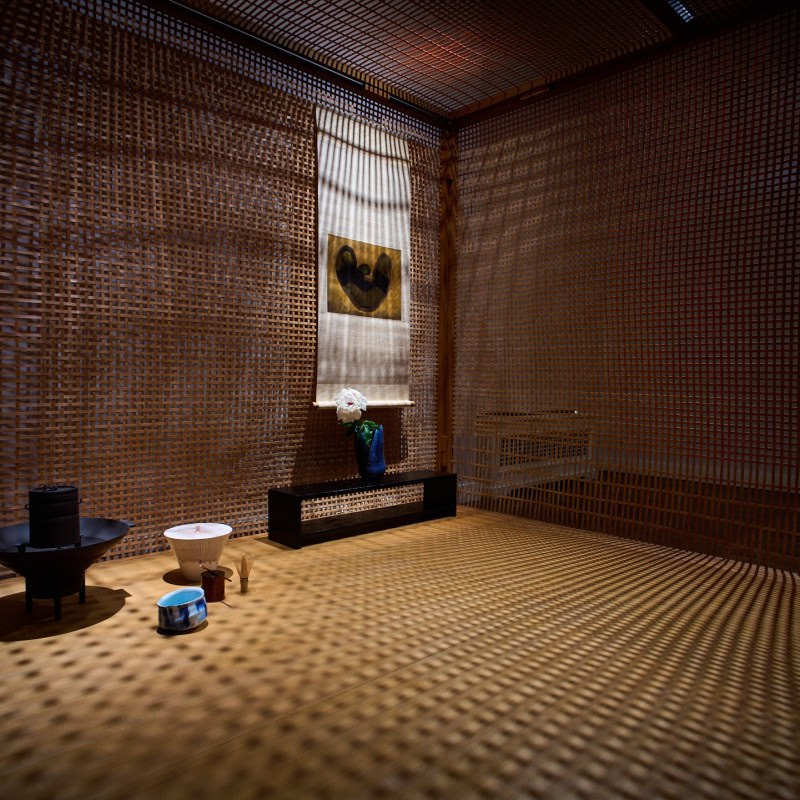
Takashi Sasaki (act. 1930-46), Heron and Persian Silk Tree in Rain (detail), Pair of two-panel screens; ink, mineral colors and gofun on silk, Showa era (1926-89), 1936, Size each 73 1/2 x 70 in. (186.5 x 178 cm)
Thomsen Gallery presents “Animals in Japanese Art” in their new location at 9 East 63rd Street. The exhibition is open September 10 to November 1, with an opening reception on September 10 from 5-8pm.

Left: Su Kwak (B. 1949). Light Within 4, 2016. Acrylic on canvas. 36 x 36 in. (91 x 91cm.)
Right: Geejo Lee (B. 1959). Moon jar, 2019. White Porcelain. 21 5/8in. (55cm.) high.
HK Art and Antiques LLC presents “Circles of Light: Su Kwak and Geejo Lee,” exhibiting over eight paintings by Su Kwak and four white porcelains by Geejo Lee. Su Kwak is known for imbuing her paintings with a message of hope and healing. The painting surfaces are created with an inventive use of collage and paint to capture phenomena of light. For Geejo Lee, the second artist in this show, enquiries into the identity of Joseon Dynasty white porcelain have led to a remarkable practice which consciously applies modern aesthetic theory to objects fashioned of white porcelain clay. The exhibition is open September 6 to 16 from 11am to 5:30pm (by appointment on Saturday and Sunday) at 49 East 78th Street, Suite 4B.

India, Fly TWA
David Klein (American, 1918-2005)
c. 1960’s
Linen backed lithograph
40 1/2 x 25 in. (102.9 x 63.5 cm.)
Kapoor Galleries presents “Images of the Exotic: Posters of India from the Golden Age of Travel.” The exhibition will showcase an array of 20th century posters created to entice potential travelers with the mysteries of the Subcontinent, typically issued and distributed by commercial aviation companies to market their international destinations to the elite. Ranging from the 1930’s to 1970, these posters feature real world oases and monuments along with portrayals of “native” people, in the hope of accumulating interest for newly available travel routes. The images boast lush landscapes of Kashmir along with scenes of snowy northern regions like Kanchenjunga, contrasting the vast natural resources India contains with exciting urban events grounded in tradition; such as the car festival at Puri. While the majority of these prints were designed by unidentified artists, a number can be attributed to the American artist David Klein, the Danish artist Otto Nielsen, and the Swiss artist Donald Brun. The exhibition runs September 5–27, with an opening reception on September 5th from 6–8pm, at 34 East 67th Street, 3rd Floor.
